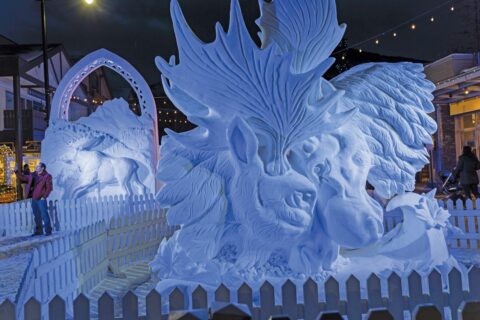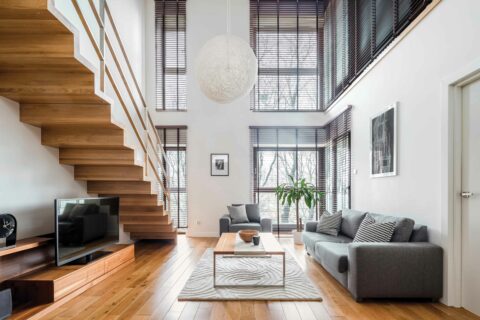April 27, 2021 • Mountain Living
In The Neighbourhood: Beautiful Banff Part 2
By By Kate Barker, Photo by Katharyn Sotvedt
Living in Banff National Park is a unique privilege. Purchasing a house in this mountain community isn’t as simple as buying a dream home and visiting the mountains when the season is right. In order to prevent the adverse effects of urban sprawl on the surrounding natural environment, Banff’s borders are defined by the federal government. This means the municipality is unable to expand in order to accommodate second homes. As such, Banff restricts its residents with a Need to Reside policy that includes working in the town, owning a business in town and being involved in its day-to-day operations, or be related to someone who’s had a continual land lease in the park since 1911. The town’s size restrictions mean residents enjoy a special closeness to nature and connection to the surrounding wilderness of the National Park.
Driving across the Bow River on the historic Banff Ave Bridge to the south side of the town presents a beautiful vista of the Parks Canada building and the Cascade Gardens. This Heritage Building features three storeys of Tudor Gothic Revival style architecture. It was built from rubble limestone and has cedar-shingled pitched roofs. This style of building reflects the early days of Banff, when the town was nothing more than a train stop on the way to British Columbia.
West is the recreation grounds, Cave & Basin, and a small community of single-family and duplex homes along Cave Ave. These homes are some of the more recent builds in Banff, and they feature modern architecture with large windows, plenty of natural sunlight and open concept interiors. These homes are typically filled by full-time Banff residents who take advantage of their proximity to downtown, their modern amenities and their quieter location.
Driving up Sulphur Mountain is the neighbourhood of Middle Springs. The properties in this area are mostly single-family homes, often with suites to accommodate seasonal workers. The neighbourhood has a park for children and is located away from the busy downtown, making it one of the quietest places to live in Banff during the busy tourist seasons.
This neighbourhood originally planned to sprawl further on Sulphur Mountain, but the proposed development was shown to have a detrimental effect on migrating wildlife and on the habitat of one of Banff’s endangered residents: the snail that lives in the sulphur waters of the hot springs. To mitigate the negative effects of construction and allow wildlife to pass through this pinch point in the valley, the Middle Springs Wildlife Corridor was created and the neighbourhood was halted at its current size.
Further towards the iconic Fairmont Banff Springs is a small community of townhomes and apartment-style buildings, most of which are staff accommodation for the grand hotel and its amenities. The homes in this area back onto numerous trails that provide access to many areas of town. They also connect to far-reaching trails in the backcountry of Banff National Park. This neighbourhood is a mixture of seasonal workers and long-term hotel staff, making it a vibrant and evolving community.
While the bulk of the townsite exists on the north side of the Bow River, this is the area where it all began, with railway workers bathing in the natural hot springs and the Canadian Pacific Railway building their grand hotel to attract wealthy visitors and their money in order to complete the railway project into British Columbia.
There’s more to living in the mountains than the famous communities. Surrounding villages and hamlets in the Municipal District of Bighorn provide excellent mountain living without the seasonal press of tourism. Learn about these communities in the next issue of Mountain Real Estate.



